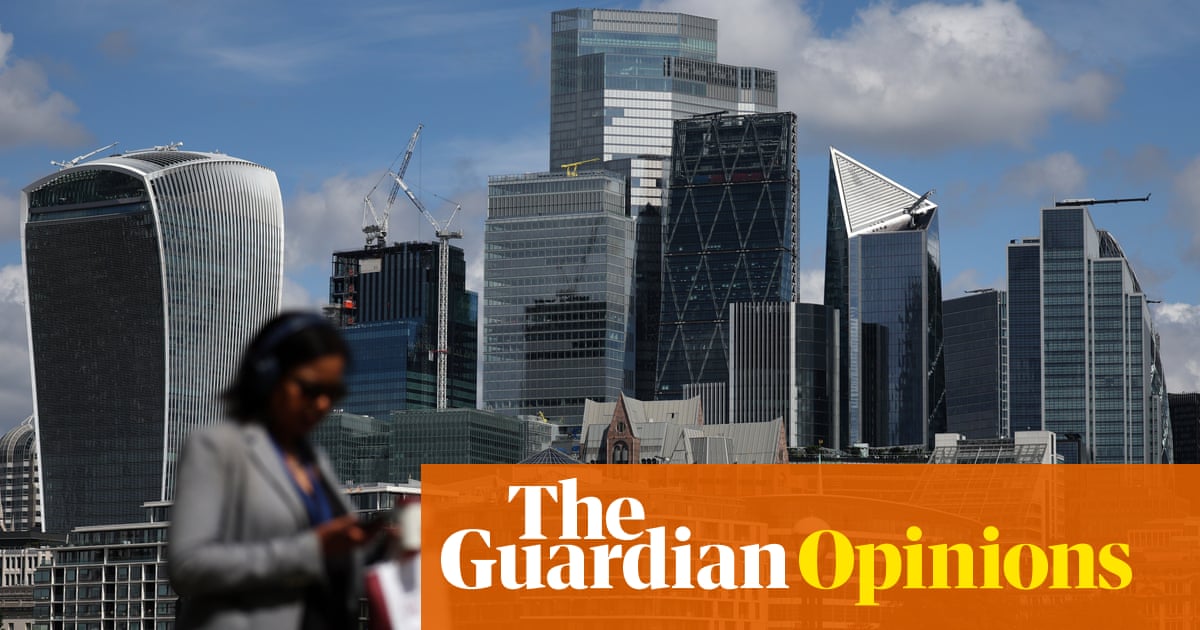Britain was the fastest-growing economy in the G7 in the first half of this year. The unemployment rate is coming down and so is wage inflation. As Jim Callaghan never quite said as he arrived back in the country during the winter of discontent: Crisis? What Crisis?
Last week’s release of key economic indicators were not exactly supportive of the government’s argument that it was handed a country in worse shape than at any time since 1945. That’s quite a claim when quarterly growth is running at 0.6%, the annual inflation rate is 2.2%, and unemployment is 4.2%.
Jeremy Hunt, the caretaker shadow chancellor, is making sure the government’s argument doesn’t go unanswered – which makes political sense for the Conservatives. When George Osborne made similar claims in 2010, Labour was too busy with a leadership contest to rebut them, with the result that they came to be accepted as fact, which they certainly weren’t.
That said, this is not a case of boom-boom Britain either. Far from it, in fact. Ruth Gregory, UK analyst at Capital Economics, puts it this way:
Overall, we are sceptical of talk that the UK is now experiencing ‘Goldilocks’ conditions. But it’s clear that there has been a shift in the narrative away from weak growth and high inflation, towards stronger growth and weaker inflation.”
That sums up the position pretty well. Things were getting better in the first half of 2024 (from a low base) and there is no harm in Labour admitting it.
Voters kicked the Tories out not because of the state of the economy but because of their record over 14 years. They will cut Rachel Reeves some slack in October’s budget, even if she raises taxes, just as they did when Gordon Brown kept to the tough spending plans he inherited from Kenneth Clarke in 1997.
But Reeves needs to deploy the right argument. Her case should be that the Tories failed to tackle Britain’s longstanding productivity, investment and trade deficits but that Labour can.
There is plenty of evidence to support that case. Dig a bit deeper into last week’s figures and it is clear the Tories handed over an economy where the structural problems were as deep – and in some cases even more acute – than they were in 2010.
Let’s start by unpicking the growth figures, where the 0.6% increase in activity in the second quarter was entirely due to a strong performance of the services sector. Manufacturing and construction both contracted. Although services make up about 80% of the economy, growth was unbalanced.
Britain has a poor record for business investment and – despite Hunt’s generous tax breaks – there is not much evidence that companies are responding to a more benign economic backdrop with more capital expenditure. Business investment was down by 0.1% on the quarter and by 1.1% over the past year.
What’s more, gross domestic product (GDP) is a poor gauge of how a country is doing. Even those who take it seriously as a measure would say that what matters is not GDP but GDP per head, and here the UK’s recent record is distinctly unimpressive. Per capita GDP rose by 0.3% in the second quarter of 2024 but is more than 2% lower than it was before the start of the pandemic. The fact that people in Britain are poorer than they were in 2020 has been masked by population growth.
after newsletter promotion
The latest labour market figures show that the number of employees on payrolls rose by more than 250,000 over the past year but the UK’s productivity performance has continued to be poor. Output an hour worked was 0.1% lower in the second quarter than a year earlier and is just over 2% higher than it was before the onset of the pandemic. It doesn’t take a genius to draw the connection between weak investment, weak productivity and weak growth in per capita incomes.
A breakdown of the labour market figures by region provides evidence of a north-south divide. The employment rate across the whole of the UK is 74.5%. However, the rate is above average in the south of England, at just above 78%, whereas in Wales it is almost 10 points lower at 68.9%. Scotland (73.4%), Northern Ireland (71.6%), the north-east (69%), the West Midlands (72.7%) and the north west (73.1%) all have employment rates below the national average.
Parts of the UK that have traditionally been more dependent on manufacturing have markedly lower employment rates than services-heavy regions. So it should come as absolutely no surprise that the latest trade figures for the second quarter of 2024 show that the UK ran a massive £52.4bn deficit in goods, which was only partly offset by a £39.1bn surplus in services.
Once again, it is easy enough to join the dots. Manufacturing’s share of the economy has been steadily falling for decades, with the result that the UK has not run a trade surplus in goods since the early 1980s. By contrast, the UK is second only in the world to the US as an exporter of services and the firms responsible for those exports – the banks, the management consultants, the architects – tend to be located in the south-east.
Put simply, the economy is going through a cyclical upswing, underpinned by the fact that wages are rising faster than prices and amid hopes that interest rates have further to fall.
That doesn’t mean all the economy’s problems have miraculously been solved, because that is obviously not the case. There are still structural challenges. Yet, Labour is doing itself no favours by exaggerating how bad things currently are. It should tell it as it is.
